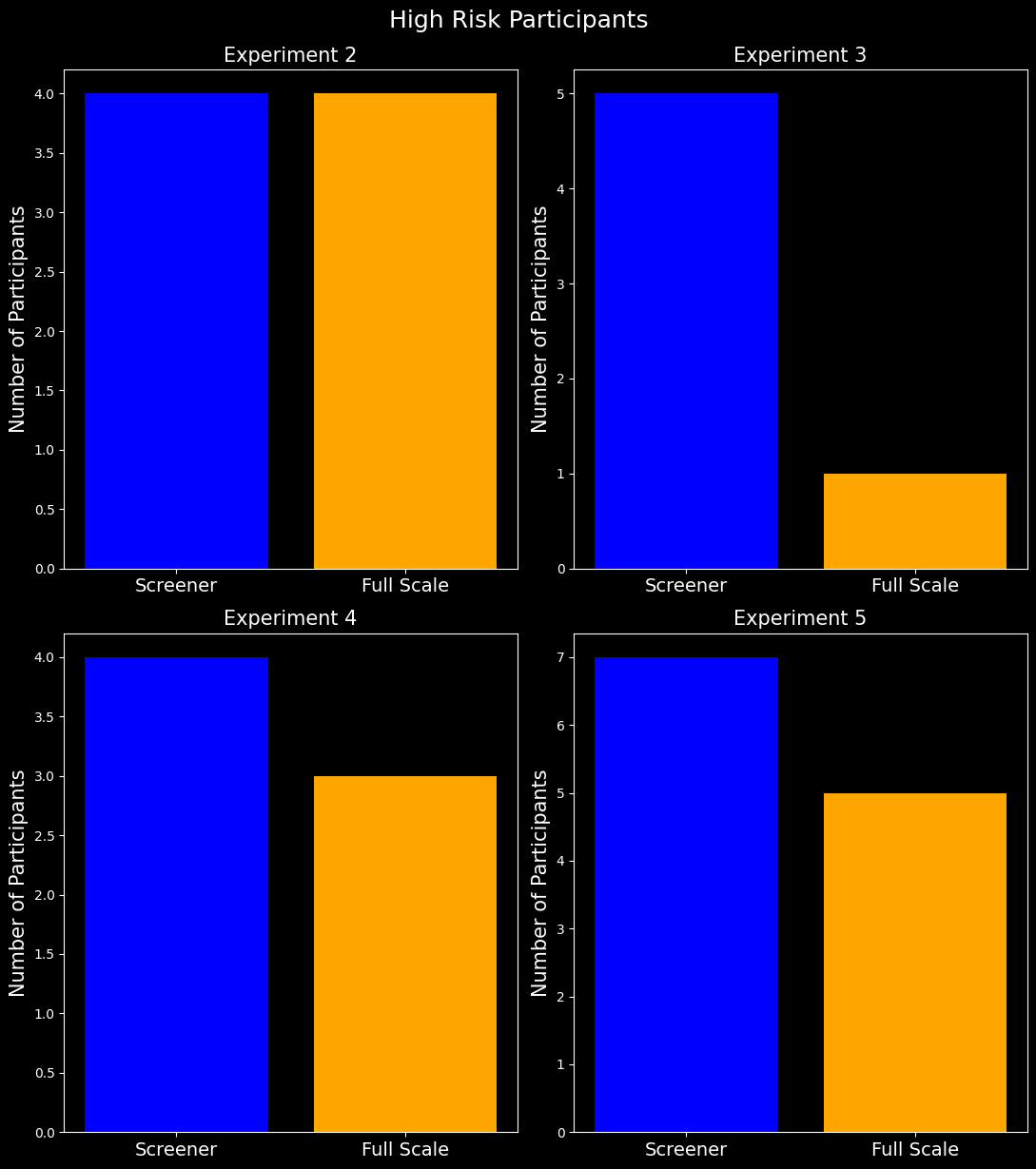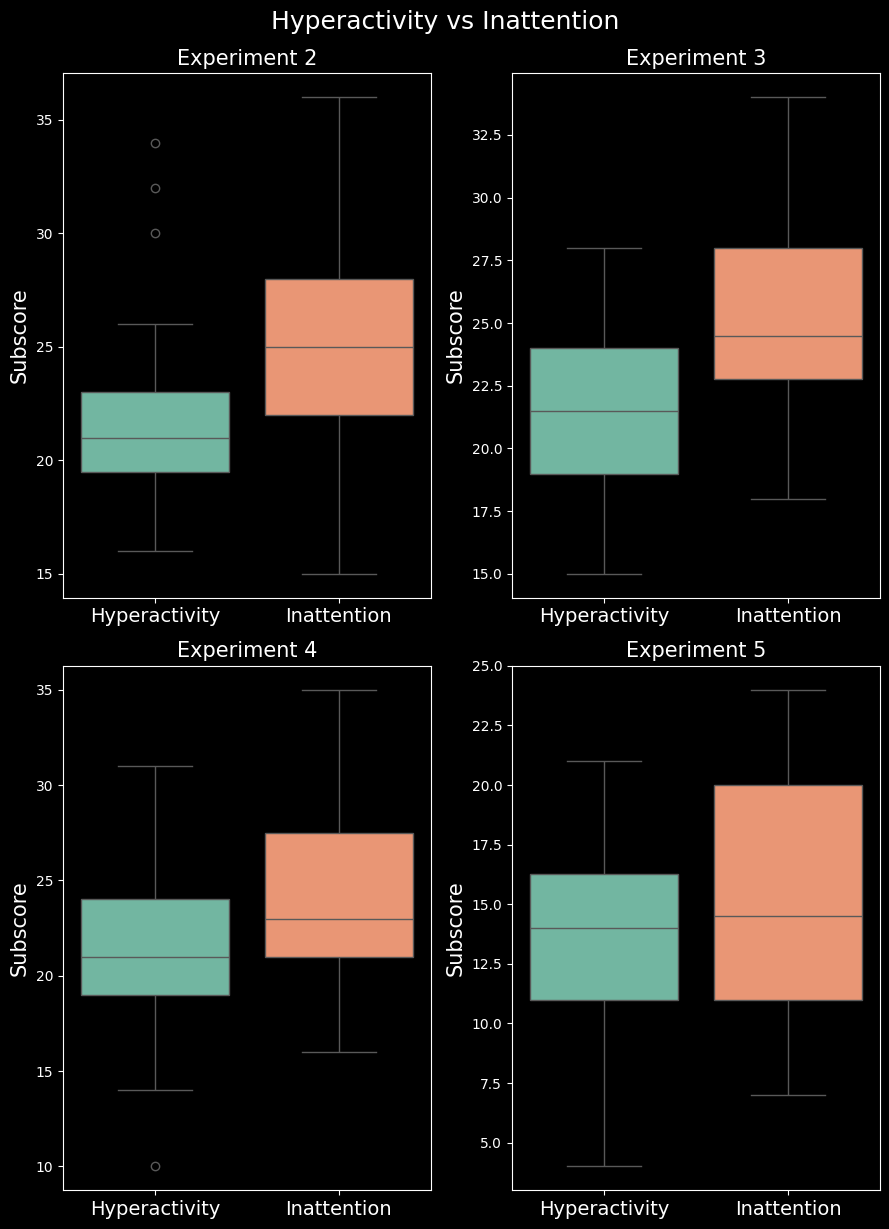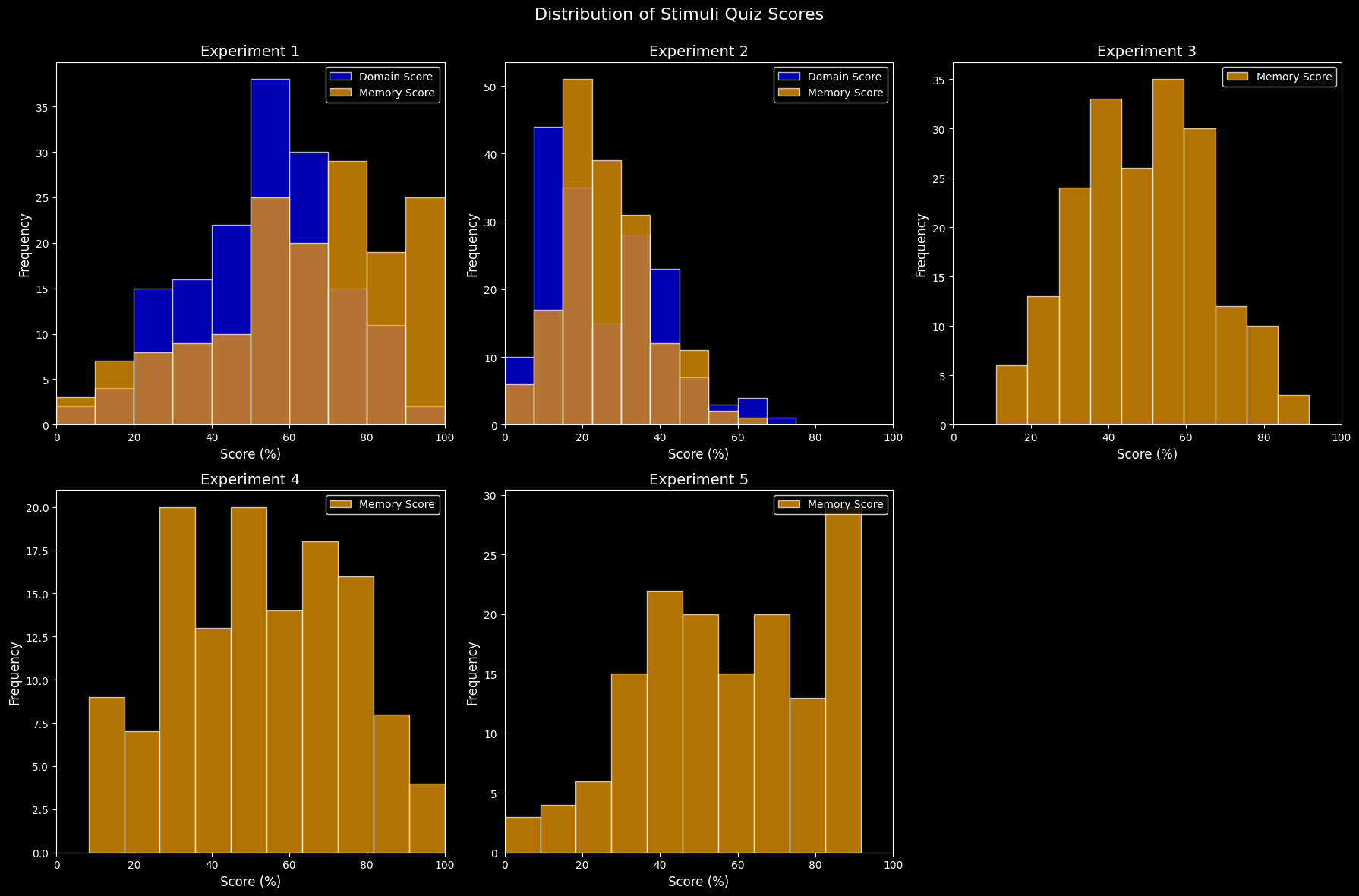Questionnaires
ASRS
ASRS: Adult ADHD Self-Report Scale
The Adult ADHD Self-Report Scale (ASRS) is a widely used tool for assessing ADHD symptoms in adults. This questionnaire, included in our dataset, is designed to evaluate the frequency and severity of behaviors and challenges commonly associated with ADHD. Below, we provide a detailed explanation of its structure, response options, scoring methods, and interpretation guidelines.
Questionnaire Structure
The ASRS consists of 18 questions addressing two key dimensions of ADHD:
- Inattention: Questions focus on difficulties such as concentrating, forgetfulness, and disorganization.
- Hyperactivity: Questions assess behaviors like restlessness, impulsivity, and excessive activity.
Each question prompts participants to reflect on how often they experience specific challenges in their daily lives.


Response Options
Participants respond to each question using the following scale:
- Never
- Rarely
- Sometimes
- Often
- Very Often
Scoring Methods
The ASRS offers multiple scoring approaches:
-
Dichotomous Scoring:
Responses are categorized as "0" (no symptoms) or "1" (presence of symptoms).
- Screener Score: Based on the first six items. A score of 4 or more indicates high ADHD risk.
- Full Scale Score: Evaluates all 18 questions for a broader assessment.
-
Likert Scoring:
Responses are assigned numerical values (Never = 0, Rarely = 1, Sometimes = 2, Often = 3, Very Often = 4).
- Screener Score: Severity thresholds:
- Low: 0–9
- Mild to Moderate: 10–13
- High: 14–17
- Very High: 18–24
- Full Scale Score: Severity thresholds:
- Low: 0–30
- Mild to Moderate: 31–39
- High: 40–49
- Very High: 50–72
- Screener Score: Severity thresholds:
-
Subscores: These scores evaluate specific symptom domains:
- Hyperactivity Subscore: High symptoms are indicated by a score of 18 or more.
- Inattention Subscore: High symptoms are indicated by a score of 18 or more.
Interpretation Guidelines
Screener Scores: Offer a quick and reliable method to identify individuals at risk of ADHD.
Full Scale Scores: Provide a comprehensive assessment of symptom severity.
Subscores: Help differentiate between hyperactivity and inattention symptoms for a deeper understanding of specific challenges.
References
For more information about the ASRS and its scoring methods, please refer to:
